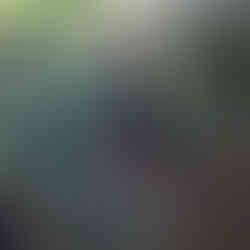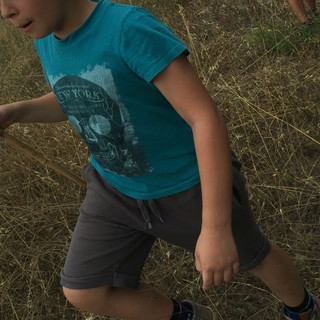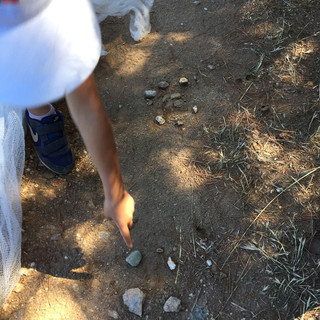The Fox Saga
- Natalia Kokotou
- Jun 29, 2018
- 3 min read

Foxes, weasels, badgers and plenty of other wildlife come and go as they please from the forest surrounding the vineyards. We sometimes get the thrill of glimpsing a fox, but, almost daily, we find traces of these animals: usually in the form of faeces, packed with seeds from mulberries or grapes, depending on the season.
On the first day of camp we set off on our rounds to meet the animals. To our dismay, we find our duck lying dead in the middle of the yard. The children look on with a mixture of interest (the newcomers) and horror (old friends of the duck) as we collect the remains.
Inquisitive minds are instantly stimulated and a massive investigation is set into motion that will take the children through to the end of the week. They begin to gather evidence, analyse possible scenarios and propose solutions for protecting our animals. Ethical questions arise and are debated, imaginations run amok; it is a thrilling adventure that lies ahead.
Having investigated all possible entry points to the yard, the most likely point seems to be the roof of the coup. A brave few climb up the pine tree to search for footprints on the roof. But, owing to rain in the night, the surface has been wiped clean.
The duck has not been the only victim, over recent weeks, chickens and rabbits have been going missing. We set off to find the fox’s lair. We venture into the woods saying “We’re going on a fox hunt, we’re not scared!” after our favorite bear hunt story . As we get deeper into the thicket we inspect the ground and bushes for traces of fur or feathers. We squeeze through thorny patches, helping each other all the way. One boy has his survival kit with him and keeps it tied to his belt at all times. He can cut back any branches blocking our path, we’re not going to give up easily.
A couple of the older boys shout to us from further up the path. They have found a well-trodden cave formed out of bushes. It looks cozy enough to lie in, there is no mistake someone has been doing just that. And then, the reward for all our efforts: there on the floor two small, but unmistakable chicken feathers.
The next day, the girls are armed with a notebook. In it, is recorded every step we have taken, every clue we have collected. Of course, anything we come across is tied back to the fox saga: a broken piece of pottery, some writing on a rock, unidentified sounds coming from the distance while we are at the top of an olive tree. Then we find paw marks. We compare them to Daisy’s (our dog) and they are far smaller and fox-like. We circle them with pebbles to mark their position, more scribbles in the notebook. It seems like we are hot on the trail.
At the end of the week we discuss what we should do about the fox. We are angry and sad that she has been eating our animals. But, we agree, she needs to eat. We think about her little bush-house and how there are probably some cubs that she needs to feed. The suggestions of traps are reluctantly pushed aside (though pits have been meticulously dug and camouflaged with bamboo cuttings). We come to the conclusion that we need to build a secure house for our animals. After all, it is our responsibility to take better care of them and make sure they are safe. The fox will fend for herelf in the wild and will find plenty to feed on.
We spend the last morning of camp catching all the rabbits and bringing them safely indoors until a better shelter is in place.
So, I am sure our summer camp children will be pleased to know that, we went out and got the best wire fencing we could find. We loaded our truck, feeling a bit like the rhinoceros in “The three little wolves and the big bad Pig” and the animals are safe and sound at last.
The fox seems to be doing fine too, she leaves her marks everywhere (apparently grapes are the flavor of the month). Better still, we got a good look at one of her cubs the other night.







































Comments